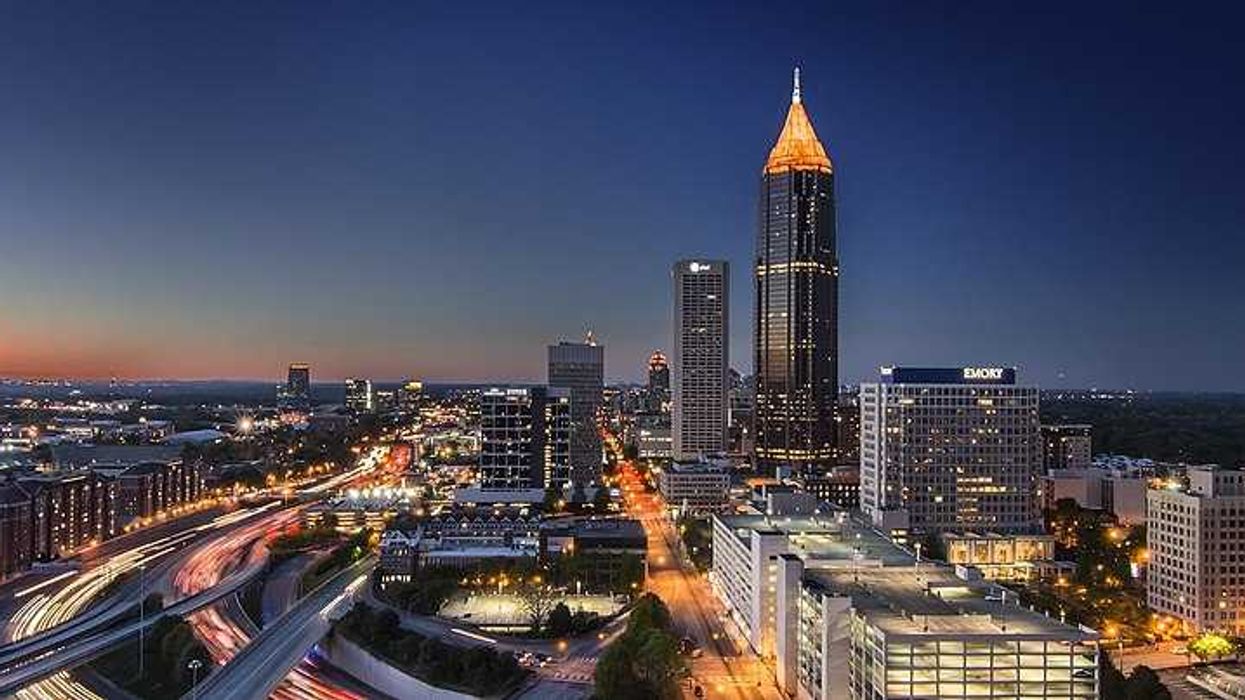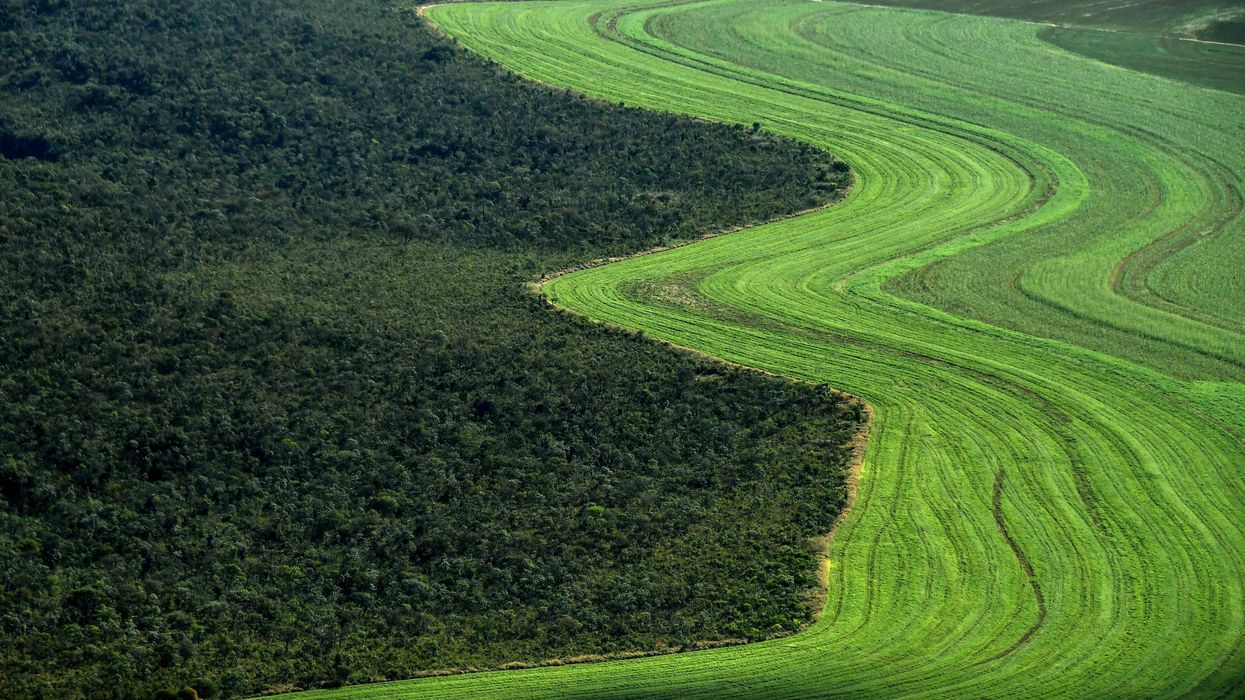Trump Gaza Plan Condemned as ‘Concentration Camps Within a Mass Concentration Camp’
After previous plans by Israel for the mass expulsion of Palestinians, onlookers fear the proposal to house some displaced Palestinians in “compounds” they may not be allowed to leave.
A new Trump administration plan to put Palestinians living in the Israeli-occupied parts of Gaza into "residential compounds" is raising eyebrows among international observers, who fear it could more closely resemble a system of "concentration camps within a mass concentration camp."
Under the current "ceasefire" agreement—which remains technically intact despite hundreds of alleged violations by Israel that have resulted in the deaths of over 300 Palestinians—Israel still occupies the eastern portion of Gaza, an area greater than 50% of the entire strip. The vast majority of the territory's nearly 2 million inhabitants are crammed onto the other side of the yellow line into an area of roughly 60 square miles—around the size of St Louis, Missouri, or Akron, Ohio.
As Ramiz Alakbarov, the United Nations' deputy special coordinator for the Middle East Peace Process, explained Monday at a briefing to the UN Security Council: "Two years of fighting has left almost 80% of Gaza’s 250,000 buildings damaged or destroyed. Over 1.7 million people remain displaced, many in overcrowded shelters without adequate access to water, food, or medical care."
The New York Times reported Tuesday that the new US proposal would seek to resettle some of those Palestinians in what the Trump administration calls “Alternative Safe Communities,”on the Israeli-controlled side of the yellow line.
Based on information from US officials and European diplomats, the Times said these "model compounds" are envisioned as a housing option "more permanent than tent villages, but still made up of structures meant to be temporary. Each could provide housing for as many as 20,000 or 25,000 people alongside medical clinics and schools."
The project is being led by Trump official Aryeh Lightstone, who previously served as an aide to Trump's first envoy to Jerusalem. According to the Times: "His team includes an eclectic, fluctuating group of American diplomats, Israeli magnates and officials from the Department of Government Efficiency (DOGE)—the sweeping Washington cost-cutting effort overseen earlier this year by Elon Musk."
The source of funding for the project remains unclear, though the cost of just one compound is estimated to run into the tens of millions. Meanwhile, the newspaper noted that even if ten of these compounds were constructed, it would be just a fraction of what is needed to provide safety and shelter to all of Gaza's displaced people. It's unlikely that the first structures would be complete for months.
While the Times said that "the plan could offer relief for thousands of Palestinians who have endured two years of war," it also pointed to criticisms that it "could entrench a de facto partition of Gaza into Israeli- and Hamas-controlled zones." Others raised concerns about whether the people of Gaza will even want to move from their homes after years or decades of resisting Israel's occupation.
But digging deeper into the report, critics have noted troubling language. For one thing, Israeli officials have the final say over which Palestinians are allowed to enter the "compounds" and will heavily scrutinize the backgrounds of applicants, likely leading many to be blacklisted.
In one section, titled "Freedom of Movement," the Times report noted that "some Israeli officials have argued that, for security reasons, Palestinians should only be able to move into the new compounds, not to leave them, according to officials."
This language harkens back to a proposal earlier this year by Israeli Defense Minister Israel Katz, who called for the creation of a massive "humanitarian city" built on the ruins of Rafah that would be used as part of an "emigration plan" for hundreds of thousands of displaced Palestinians in Gaza.
Under that plan, Palestinians would have been given "security screenings" and once inside would not be allowed to leave. Humanitarian organizations, including those inside Israel, roundly condemned the plan as essentially a "concentration camp."
Prior to that, Trump called for the people of Gaza—“all of them”—to be permanently expelled and for the US to "take over" the strip, demolish the remaining buildings, and construct what he described as the "Riviera of the Middle East." That plan was widely described as one of ethnic cleansing.
The new plan to move Palestinians to "compounds" is raising similar concerns.
"What is it called when a military force concentrates an ethnic or religious group into compounds without the ability to leave?" asked Assal Rad, a PhD in Middle Eastern history and a fellow at the Arab Center in Washington, DC.
Sana Saeed, a senior producer for AJ+, put it more plainly: "concentration camps within a mass concentration camp."
The Times added that "supporters insist that this would be a short-term arrangement until Hamas is disarmed and Gaza comes under one unified government." Lightstone has said that reconstruction of the other parts of Gaza, where the vast majority of the population still lives, will not happen unless Hamas, the militant group that currently governs the strip, is removed from power.
But while Hamas has indicated a potential willingness to step down from ruling Gaza, it has rejected the proposal that it unilaterally disarm and make way for an "International Stabilization Force" to govern the strip, instead insisting that post-war governance should be left to Palestinians. That plan, however, was authorized last week by the UN Security Council.
In addition to raising concerns that "those moving in would never be allowed to leave," the Beirut-based independent journalist Séamus Malekafzali pointed to other ideas Lightstone and his group want to implement. According to the Times, "It has kicked around ideas ranging from a new Gaza cryptocurrency to how to rebuild the territory in such a way that it has no traffic."
Malekafzali said, "Former DOGE personnel are attempting to make Gaza into yet another dumb tech experiment."
Like Katz's plan months ago, the new Trump proposal calls for a large compound to be built in Rafah, which Egyptian officials warned, in comments to the Wall Street Journal, could be a prelude to a renewed effort to push Palestinians across the border into the Sinai Peninsula.
But even if not, Jonathan Whittall, the former head of the UN Office for the Coordination of Humanitarian Affairs in Palestine, said it hardly serves the humanitarian role the Trump administration and its Israeli co-administrators seek to portray.
"If plans for these 'safe communities' proceed, they would cement a deadly fragmentation of Gaza," he wrote in Al Jazeera. "The purpose of creating these camps is not to provide humanitarian relief but to create zones of managed dispossession where Palestinians would be screened and vetted to enter in order to receive basic services, but would be explicitly barred from returning to the off-limits and blockaded 'red zone.'"
He noted that there is a conspicuous lack of any clear plan for what happens to those Palestinians who continue to live outside the safe communities, warning that Israel's security clearances could serve as a way of marking them as fair targets for even more escalated military attacks.
"Those who remain outside of the alternative communities, in the 'red zone,'" he said, "risk being labelled 'Hamas supporters' and therefore ineligible for protection under Israel’s warped interpretation of international law and subject to ongoing military operations, as already seen in past days."


